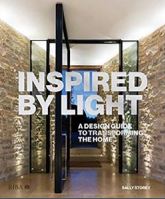Share
15.10.2021
Blog Venice Biennale 2021 - How we will all live together?
Posted by Arianna Ghezzi on 15 Oct 2021
During the pandemic, it has been challenging to attend cultural events. It has been a long wait to visit the 17th International Architecture Exhibition in Venice. The "Biennale" runs from 22nd May to 21st November 2021 and was curated by architect and scholar Hashim Sarkis. This year's theme is "How we will all live together?": in the context of widening political divides and growing economic inequalities, Sarkis called on architects to imagine spaces in which "we can generously live together".
The exhibition explores this and its interpretation in the numerous pavilions located in the "Giardini" and the restored area of the Arsenale of Venice. Walking along those spaces and sharing the installations with the other visitors is already an invitation of sharing experiences again and indirectly pushing the interaction with other human beings.
Most countries hosting the pavilions have highlighted the struggle of organising this year's exhibition due to the pandemic, and some of them have been held online. However, it appears the enthusiasm to share and to get together to face worldwide issues such as climate change has encouraged people to attend in person.
For example, the Denmark Pavilion highlights how important it is to gather. They offered tea in the afternoons and provided a relaxing seating area surrounded by water. They also used the pluvial water collected in Venice as part of the installation, stressing that the world is one cycle system that we all create together.
As a lighting designer, I'm always captured by installations with lighting, shadows, daylight or any form of digital illumination. The light creates a sense of expectation, such as the Uruguay portal, where the contrast of daylight and artificial light invites the spectator in.
Many installations were fusing presence detectors and artificial lighting to interact with the user and create that sense of belonging and a dimension where two realities (one human and one artificial) could coexist. "Shaped Touches" explores how new senses could be used, including the ability to see within the near-infrared spectrum of light.
It was also inspirational to see that, even if new materials are explored, and the boundaries of the architecture are pushed, the lighting remains one fundamental aspect of the new reality. It elevates the new material into a new poetic, like in the "Inhabiting new Tectonics" installation, where linear lighting concealed in the row structure of the microarchitecture highlights the new fibre material.
It was fascinating to witness how important it is to have a good lighting scheme for art exhibitions. The use of framing projectors, knowing where to place the fixtures, good colour rendering light sources, and intensive programming can be real game-changers when creating high-quality art.
Lighting was also an instrument to unveil architectural elements which are part of the pavilion and which would always be part of that dynamic. The theme in the Italian pavilion was to integrate and consider the beautiful frescoes of the ceiling which provides an amazing background for the hanging installations below and the cove lighting all around helps the visitor to perceive their presence.
There is so much learning and inspiration from the art exhibitions and we are so happy and thrilled that we can visit them again.















